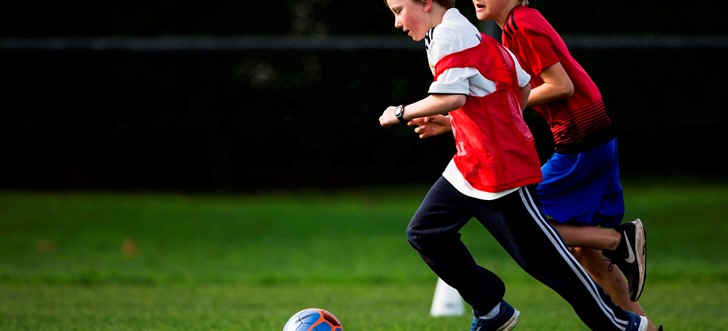Healthy Body, Active Sports, Happy Children

Scottish-born Eloise Carella has over 12 years’ experience working with children in hospitals, communities and private sectors. She currently works at Starship Hospital and in private paediatrics at PhysioFix and Auckland Physiotherapy. Eloise has three children and enjoys visiting new places.
~
It’s fantastic to have the opportunity to support our children while they play sports and stay active. Keeping active should be fun, build resilience, relationships, develop skills in teams and allow children to learn through their growth at all ages.
What else do children learn through sports? Body awareness, emotions, behaviours, communication skills, physical skills and the knowledge of the sports they choose to play. These are influenced by each of us involved from the parents, coaches, trainers, teachers, physios and physicians to the sports organisations and clubs.
We all have a key role to play in ensuring we keep sport fun. When it’s not fun, injury occurs, pressure intensifies, expectations increase, behaviours change and often children don’t speak up.
Knowing what our body can cope with is exactly how we can be successful in sport. Knowing when to ask for help, direction, treatment and support to manage some of the challenges children face during growth. We should not underestimate the growing skeleton and the impact of volume, intensity and specificity can have on a child.
If it hurts say hang on,
If it’s painful say pause
If it’s no fun, forget it.
Speak up is safe sport!
Seek advice from the team doctor, physio or physician who will assess, manage and modify your activity to get you back to full participation. Don’t play in pain.
The common presentations of the growing sporty child are pain during and/or after sport and sometimes at night too. Swelling around a joint often associated with continued repetition of an action, a tendency to drop off in the latter end of a match, a limp or compensation movement due to pain.
These features will be reflective of a new period of growth combined with increased intensity, volume or specificity, as well as high impact with little or no rest in between. By resting too much, a common failing to the active child, the pain subsides and they go back to sport but the pain returns. During a period of growth, short term imbalance and change in biomechanics occurs to their musculoskeletal system.
Phased and graded return with the right guidance and modification will support their new growth phase to continue participation. Without this, children will continue to stress their tendons and joints which continue to lead to pain and poor function.
Ask your children, team or peers how they are coping, especially around times of change in level or intensity of exercise preseason or in competition. Give opportunities to speak up without prejudice or risk of their place in the team. Their growth journey is for a lifelong body that functions to the best of its ability.
For more information, visit The Paediatric Physio.




